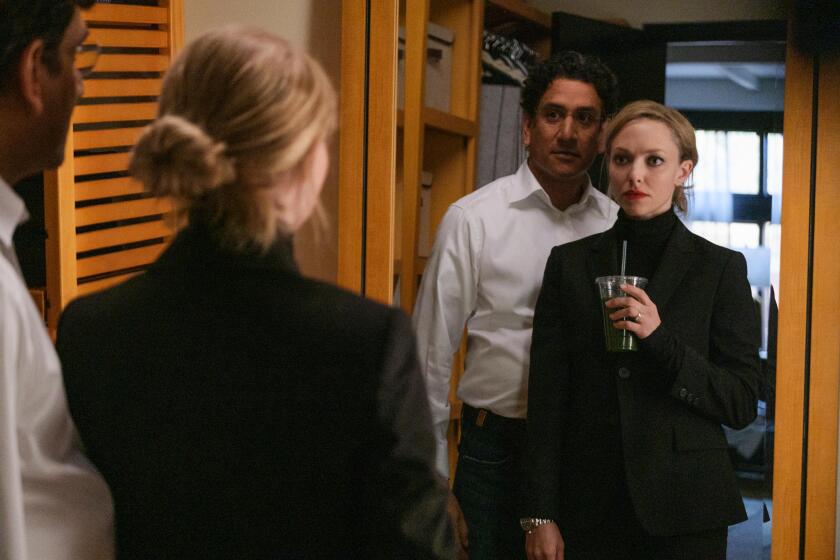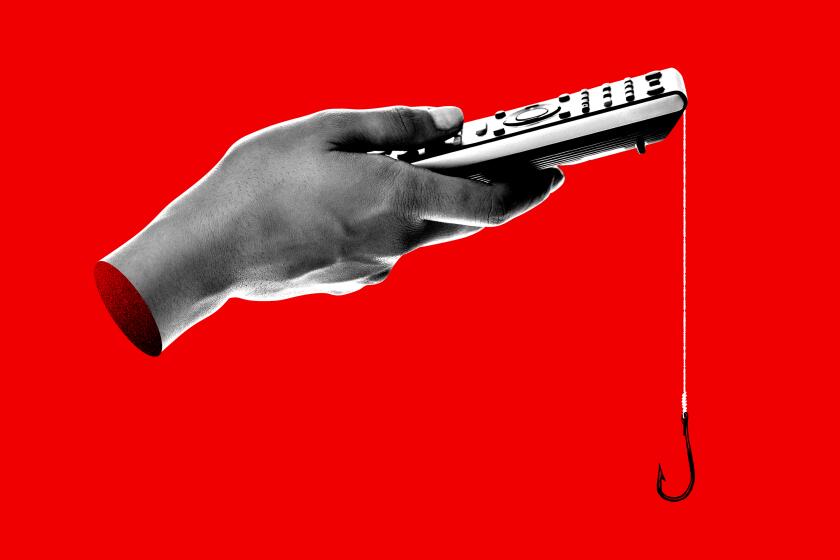‘You hurt people!’ How ‘The Dropout’ stuck the landing on Elizabeth Holmes’ downfall
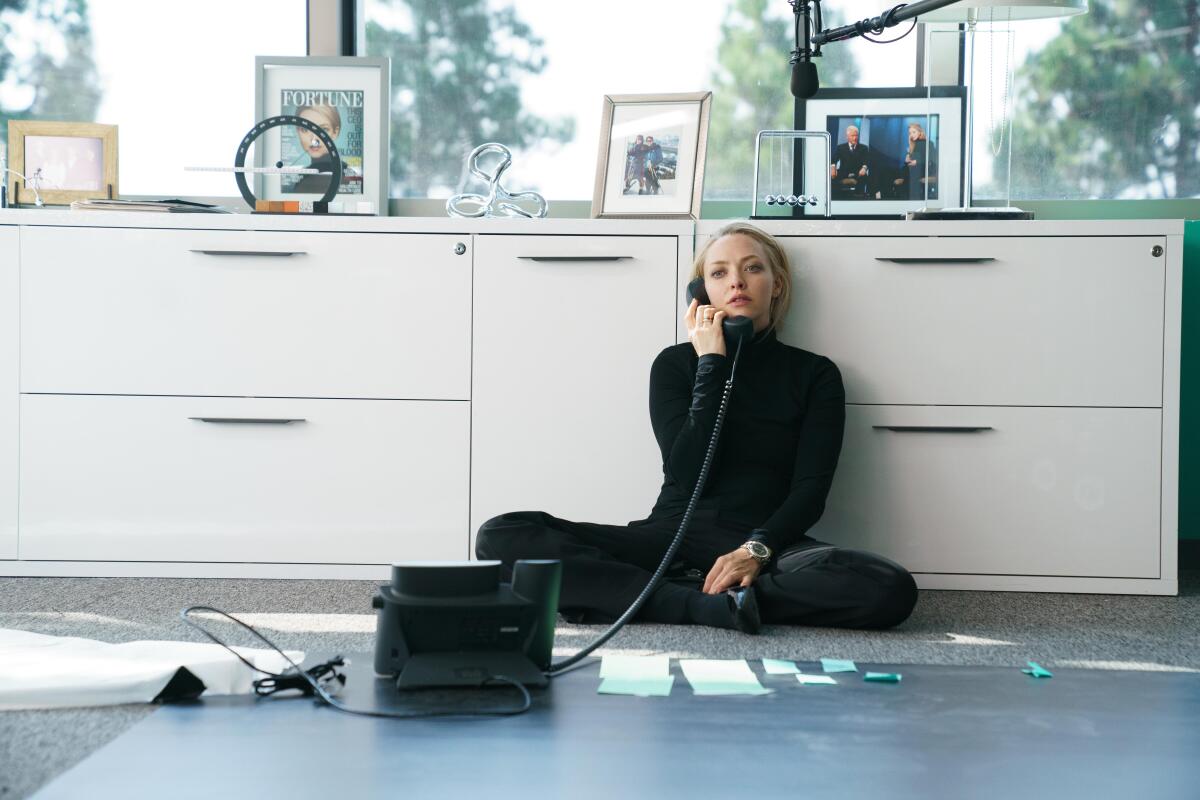
- Share via
The following contains spoilers from the final episode of “The Dropout.”
“Do you really believe that?”
“Is there something wrong with you?”
“Do you have any idea of what you did?”
This is what Theranos lawyer Linda Tanner asks her now-former boss in the last minutes of “The Dropout,” the Hulu miniseries dramatizing the rise and fall of the fraudulent blood-testing startup and its founder, Elizabeth Holmes.
Though Holmes had her company shut down by the government, owes millions of dollars across various settlements and could go to jail for 20 years, the disgraced wunderkind (portrayed by Amanda Seyfried) appears unmoved by any of it, and even has the audacity to be upbeat while playing with her new dog, dishing on her new boyfriend and, as she describes it, “taking a moment to enjoy myself and have fun.”
From studying depositions and speaking to farm animals to perfecting the position of her tongue, Seyfried explains how she nailed Holmes’ baritone.
“You hurt people,” continues Tanner, played by Michaela Watkins. “I worked here, so I have to live with that somehow. But I’m not sure that you understand. I mean, you must, right?” It’s what the viewers of the eight episodes are also asking, up until these final frames.
Yet the enigmatic Holmes flees from Tanner, shutting her out with Airpods and almost running away with her dog. She then falls to her knees while screaming at the top of her lungs — a wordless moment of truth, after many uttered falsehoods — only to hop into an Uber with a much higher-pitched voice and a newly adopted nickname.
How do you conclude a real-life saga that’s still unfolding? And how do you find emotional truth in a persona as carefully constructed as Elizabeth Holmes’? Series creator Liz Meriwether and the episode’s director, Erica Watson, spoke to The Times about the series finale, including Holmes’ split from Sunny Balwani and that Billy Evans bedroom scene. (The following interviews, conducted separately, have been condensed and edited for clarity.)

Why end “The Dropout” this way?
Liz Meriwether: I had initially thought that the show would end at Burning Man, because the week that the company started being dissolved, she went to Burning Man with her new boyfriend, Billy Evans. In the pictures, they’re both in costume and they look really, really happy and in love, and it always fascinated me.
And then COVID happened. So in rethinking the ending, I wanted to keep the idea of her stepping into a new identity. But I also wanted some kind of reckoning, because in real life, outside of the trial, there hasn’t been much of an acknowledgment of what happened. I considered not giving the audience that, but then I felt like it would have been too frustrating.
I wanted to do something, but I wanted to have it happen in private. Linda is a composite character of a lot of different Theranos lawyers and employees, so we can have her do something that didn’t actually happen in real life. As I was writing the scene, she became a conduit for a lot of things that I had wanted to ask the character of Elizabeth and confront her with.
And with Michaela Watkins doing that scene, I knew we were all in really good hands. It ended up being a much simpler scene than a big sequence at Burning Man.
Showrunner Liz Meriwether explains how she found a dramatic through line in the ever-changing, often absurd case of the disgraced Theranos founder.
Erica Watson: That was one of my favorite sequences of the episode to film. We did that on the very last day of shooting, because we had to clear out the whole Theranos set for the scene. Even though there were a lot of things coming out of [the] Elizabeth Holmes [trial] at the time we were filming, we wanted to stay true to what was happening in our story, play with the emotion of everything she had gone through at that point.
Meriwether: There was a real-life moment toward the end of Theranos, when Elizabeth was doing one of her last presentations of the technology, and as she was leaving the stage, somebody yelled out, “You hurt people!” It always stuck with me because it felt like the distillation of what we wanted her to acknowledge.
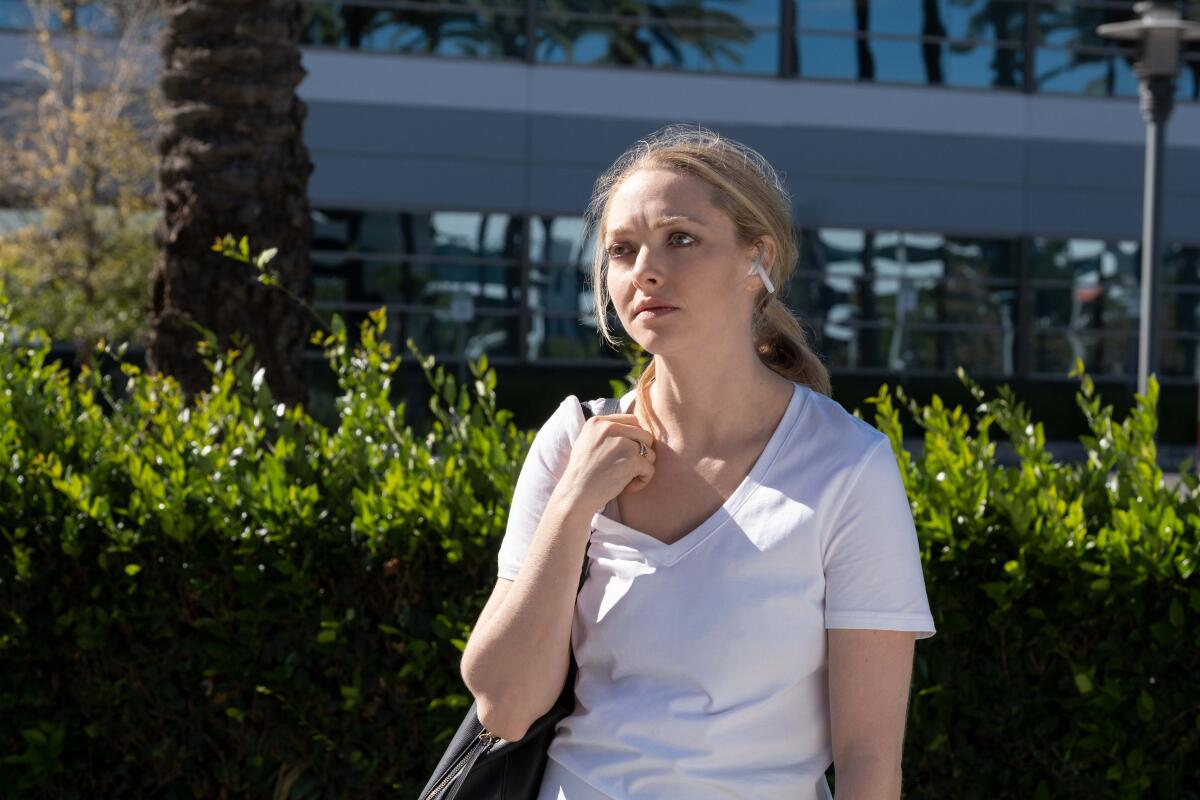
How did the idea for the screaming come about?
Meriwether: I forget what I wrote, but it was something like, “The weight of what happened hits her,” and I think I used the word “reckoning.” I went to set that day and talked to Amanda about it, and she was like, “I think she should scream, and I think she needs to fall on the ground.”
Watson: We all felt it would be the most authentic expression of Elizabeth to herself, by herself. I talked with Amanda about what Elizabeth Holmes’ emotional state was at the time and gave her the freedom to articulate through the volume and the shape of the scream. That’s a great actress, somebody who can live in that truth, that heartbreak of losing everything and still not be able to hold herself accountable for the things that she had done.
Meriwether: I wouldn’t be able to put into words what it means, but we decided it was going to be the closest the character got to acknowledging what happened and having some kind of real moment with it.
Watson: One of the things that really attracted me to the story in the first place was the humanity that Liz brought to Elizabeth Holmes. Being able to track her from a young girl in the first episode to this moment at the end of her crying outside of Theranos with her dog really is the most wide and complete depiction of her as a real human being that I’ve seen.
From ‘Bad Vegan’ to ‘Inventing Anna,’ scammers are ubiquitous on TV: That’s what happens when programmers turn true stories into reheated IP.
The finale begins with Holmes and Balwani (Naveen Andrews) as a united front in the aftermath of the Wall Street Journal exposé, but once the government shuts Theranos down, the two trade thinly veiled threats in a thrilling exchange. How did you pull off this sequence, which ends with their split?
Meriwether: That relationship was always the hardest thing to write because we had so little information about what happened, and we’re still learning information from Sunny’s trial that’s happening right now.
That scene with the two of them going toe-to-toe is one of my favorite scenes because there’s so many dynamics at play. The way they use power in their relationship — they’re so capable of hurting each other because they knew each other so well, but they also almost fed off of each other. These are two toxic and completely desperate characters at the end of their rope, playing all of their cards against each other.
Watson: I loved seeing how Theranos’ downfall really impacted how these two characters approached each other, and how vulnerability can be expressed not necessarily as a display of softness, but in an exact opposite of that.

The episode’s deposition scene is intercut with an intimate moment between Elizabeth and her now-husband, Billy Evans (Garrett Coffey). How did you craft that sequence?
Meriwether: Billy was a real structural problem for me. The show has a real momentum, but it feels like the Billy relationship was such a reset that it was difficult to figure out how to include him without the audience feeling like they were suddenly in a different show or meeting this whole new character that late in the series.
There was a cool thing in the podcast where they cut together all the times Elizabeth said “I can’t remember” in the deposition, and it struck me how memory is so linked to identity and the question of, if you could wipe your memory clean and start over, who would you be? That’s what the Billy relationship felt like to me — just from a character perspective, not in real life. I have no idea what’s going on in real life.
Watson: We wanted her scene with Billy to be a big contrast of her time at Theranos. We played a lot with going in and out of focus, and made everything feel softer and more ethereal and dreamlike — the visual opposite of the lines and sharp edges that are reflective of the Theranos world.
Even before John Carreyrou was done writing “Bad Blood,” he knew there were others clamoring to take a bite of the Theranos apple.
Tell me about the quieter moment when board member George Shultz (Sam Waterston) tells journalist John Carreyrou (Ebon Moss-Bachrach), “Isn’t it amazing how far decent people will go when they’re sure they’re right?”
Watson: Sam Waterston is a terrific actor. It’s important that in that scene, we got that George Shultz knew that he was finally doing what was right, even though he had no intention of apologizing to his grandson, Tyler.
Meriwether: He’s so good in that scene. He’s so heartbreaking. It’s really the first scene where the blinders are off for him; it’s the first time in the series where we’re seeing him accept that he was so wrong about everything. He’s this amazing man who’s been through so much, so how does he justify this to himself? How does he make sense of it to himself? I felt like we needed to hear his take on why it happened.
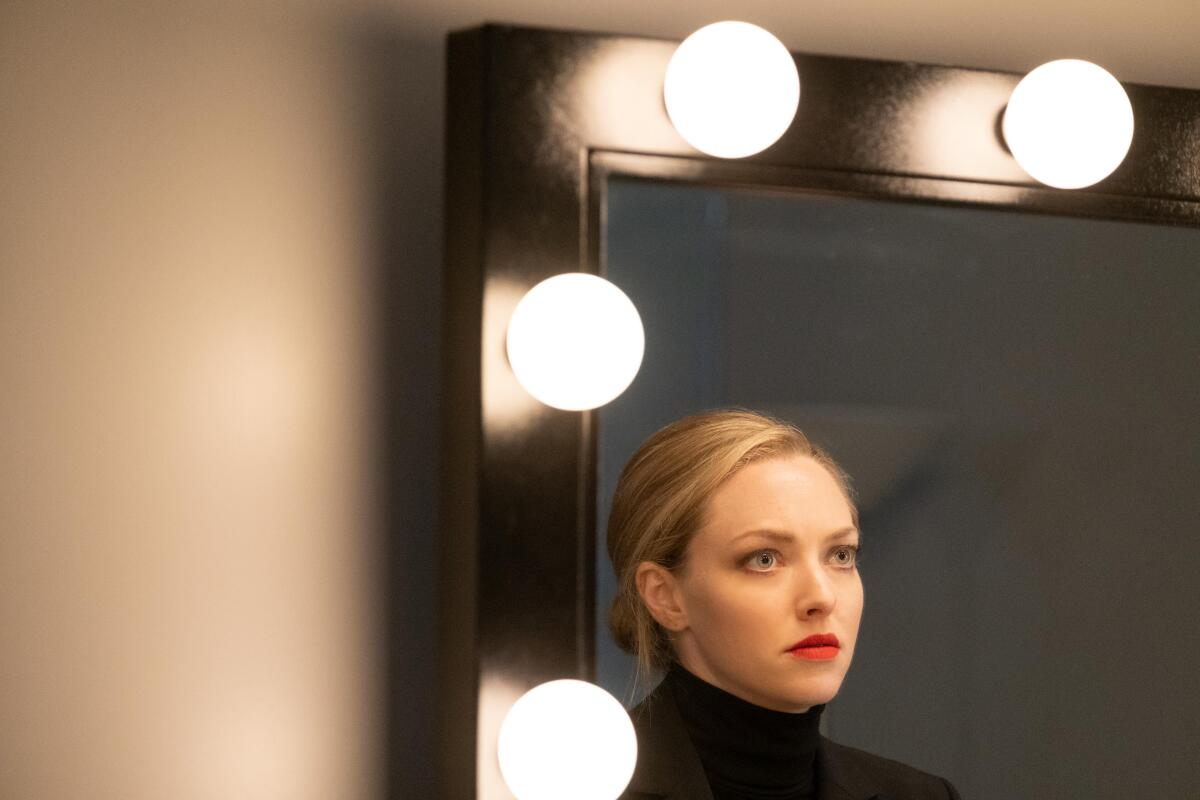
Is it difficult to end a story when the real-life subject has yet to explicitly admit anything or formally apologize?
Watson: In that scene after the interview, Amanda did such a great job of allowing the audience to have a small window into Elizabeth Holmes’ mind when she’s alone, looking at herself in that mirror. You really see her core belief system in thinking that she was right, as well as her battling to maintain this persona she’s made for herself. I think that people walk away from the show maybe not agreeing with everything she did, but certainly understanding the psychology of her choices and who she is.
Meriwether: It ultimately would have felt false if, in our show, she had admitted to anything or really talked about what had happened. And I felt, from watching the deposition and from seeing the relationship with Billy develop, she wasn’t engaging with it in a clear-eyed way, so I don’t think it would have felt right to have that in the show either.
I was always looking for ways that she was justifying what happened to herself, and there’s one quote from her lawyer’s opening argument in her trial: “Failure is not a crime.” We incorporated that into Elizabeth’s response to Linda Tanner because it felt like the closest thing I had heard to her admitting that something didn’t go right.
'The Dropout'
Where: Hulu
When: Anytime
Rated: TV-MA (may be unsuitable for children under the age of 17)
More to Read
The complete guide to home viewing
Get Screen Gab for everything about the TV shows and streaming movies everyone’s talking about.
You may occasionally receive promotional content from the Los Angeles Times.
